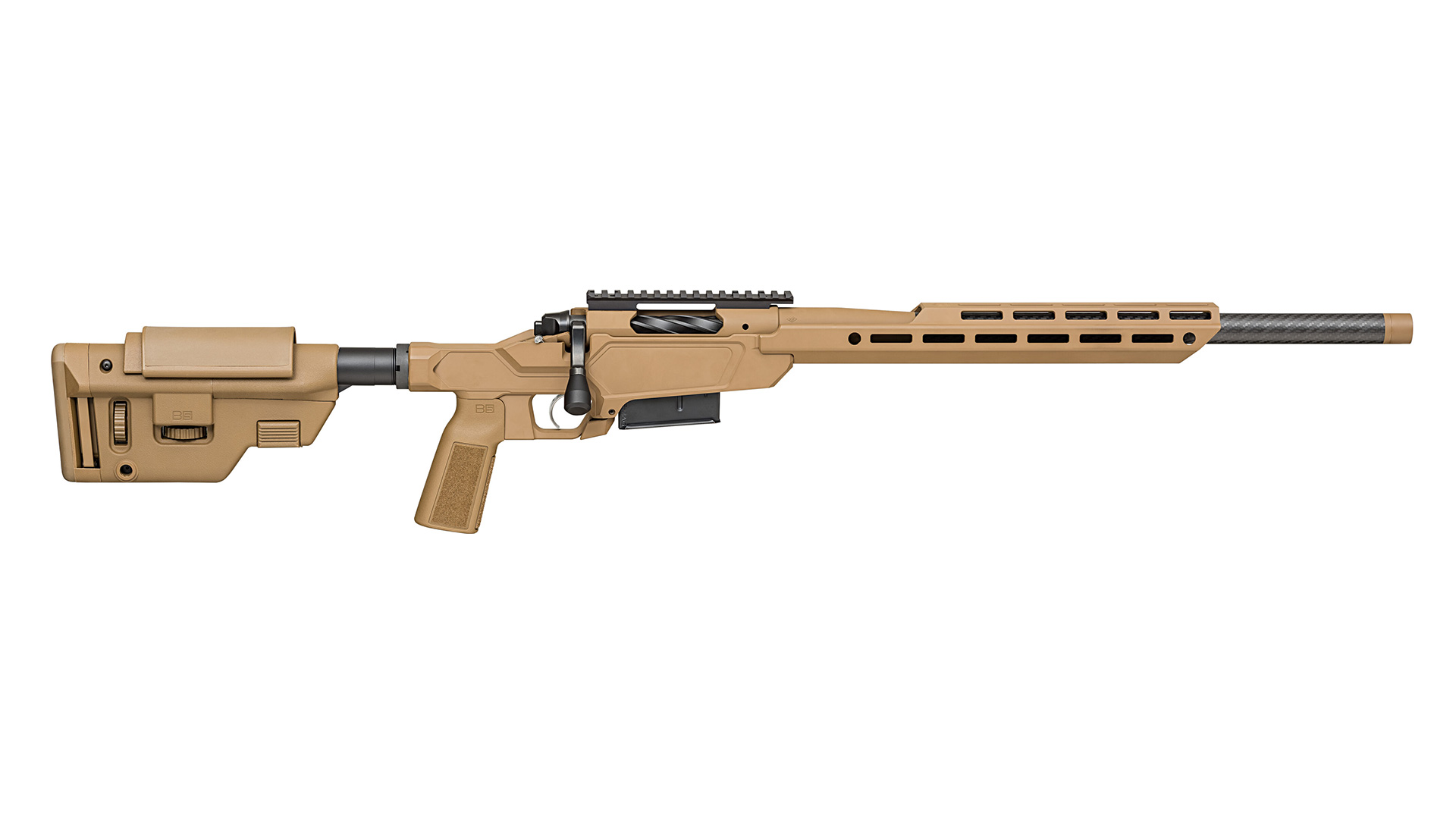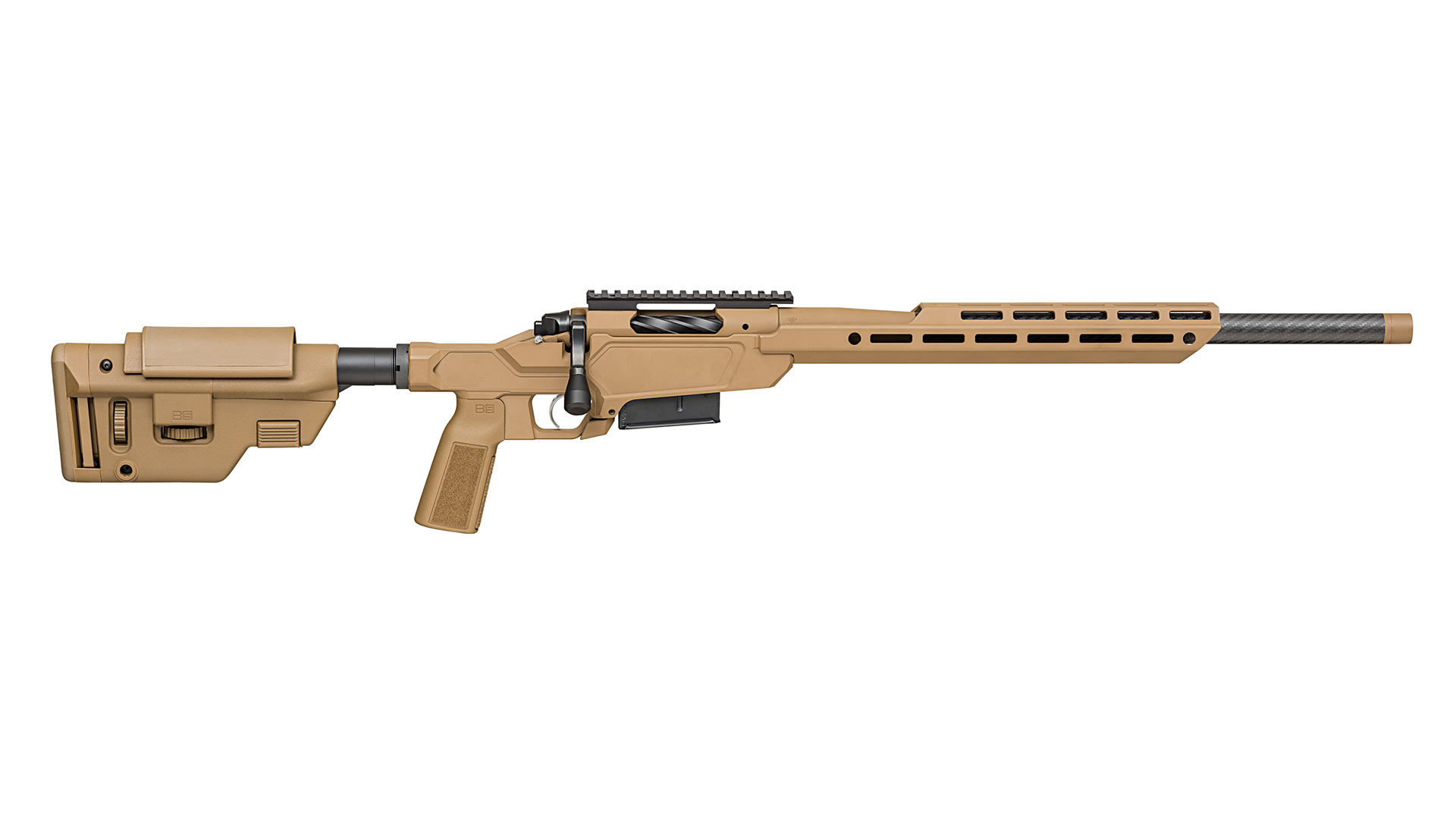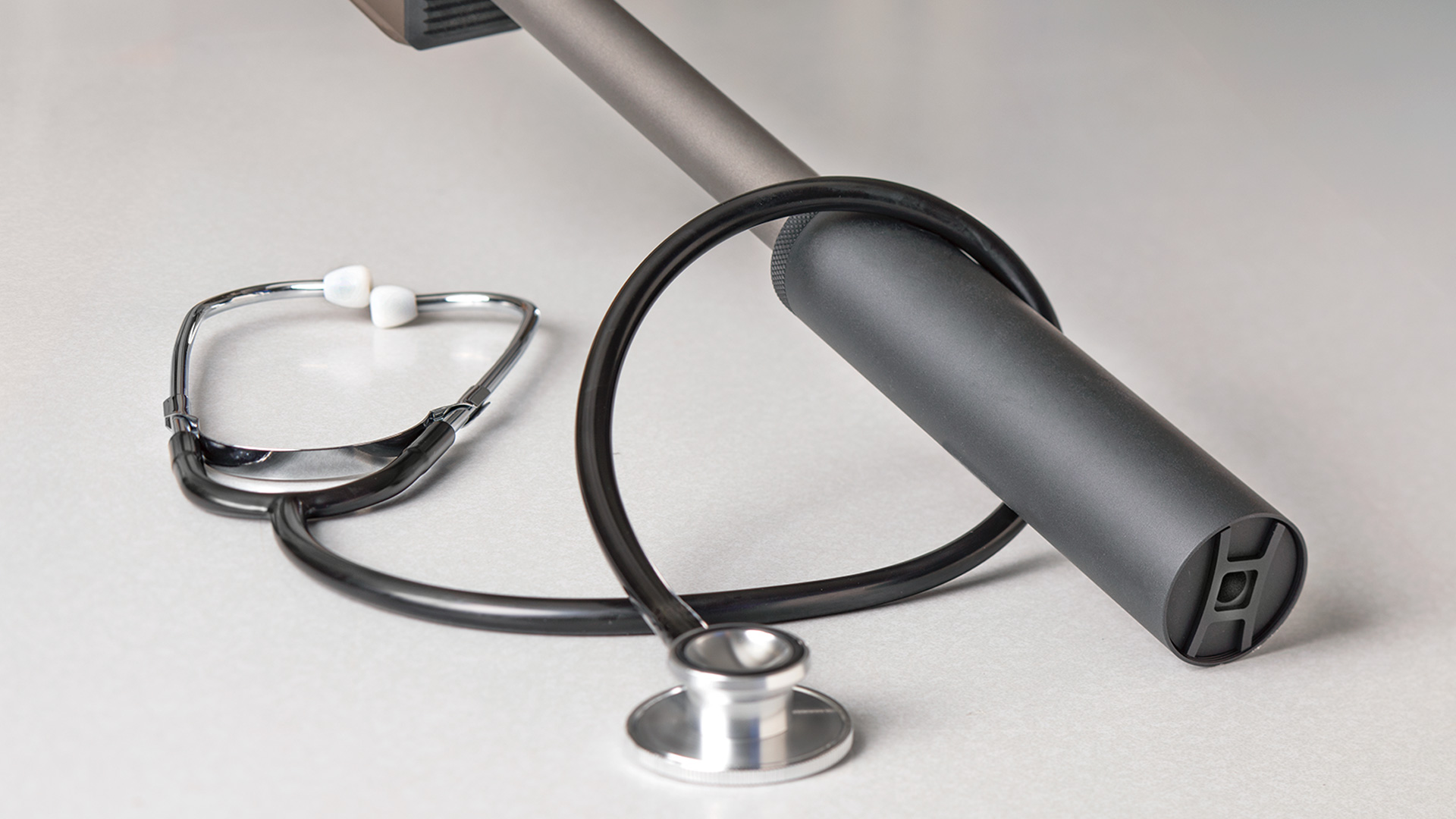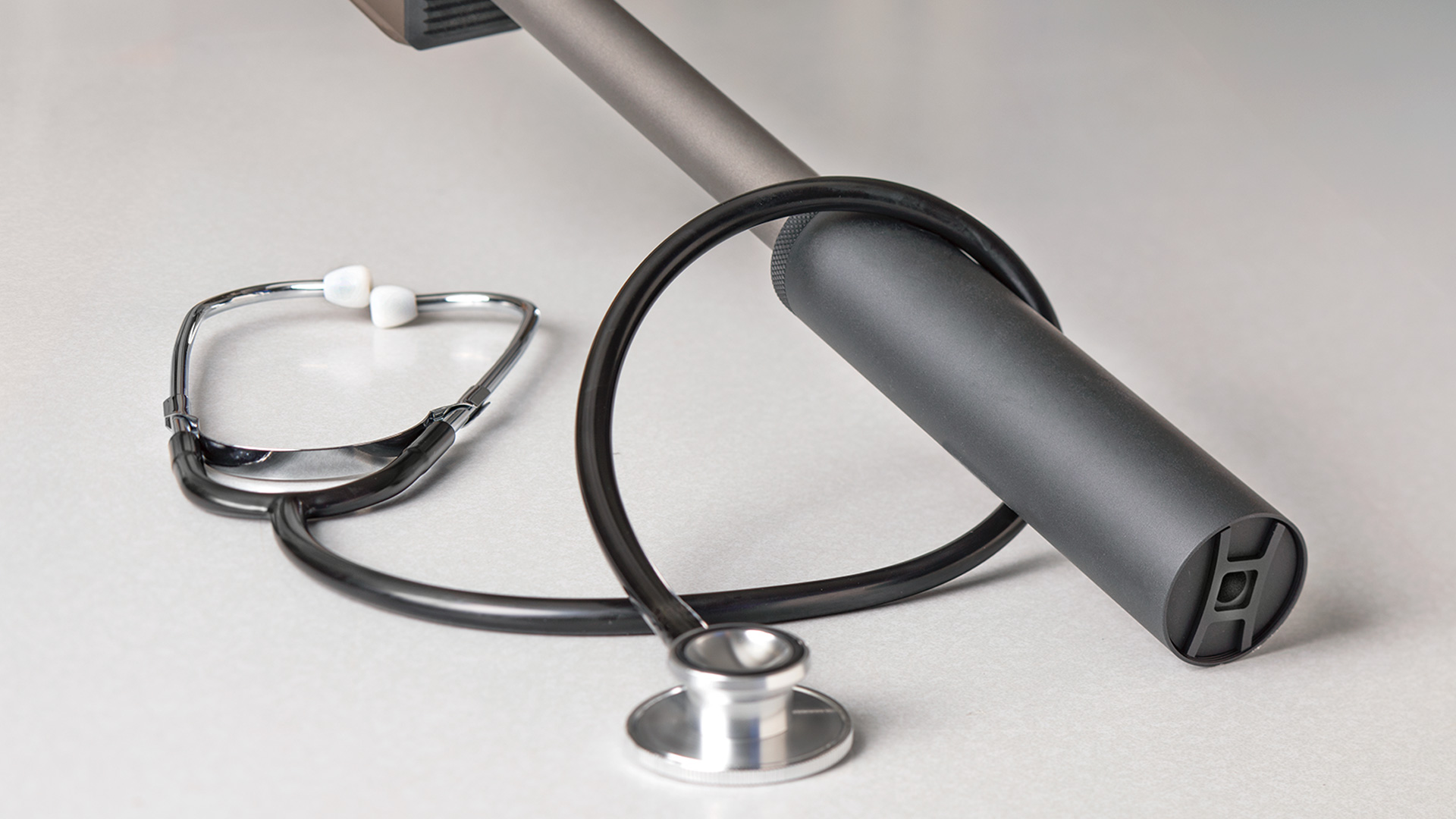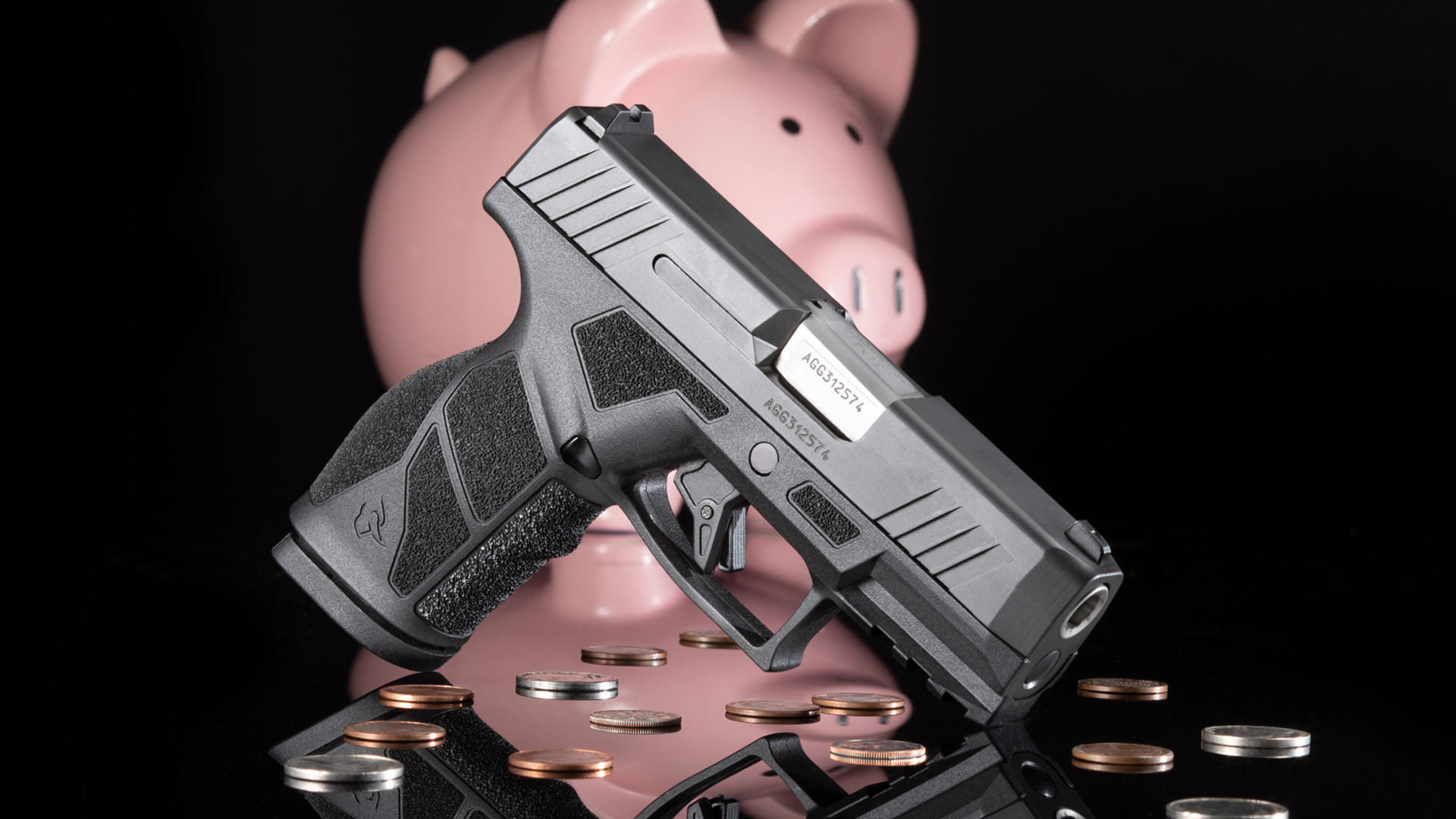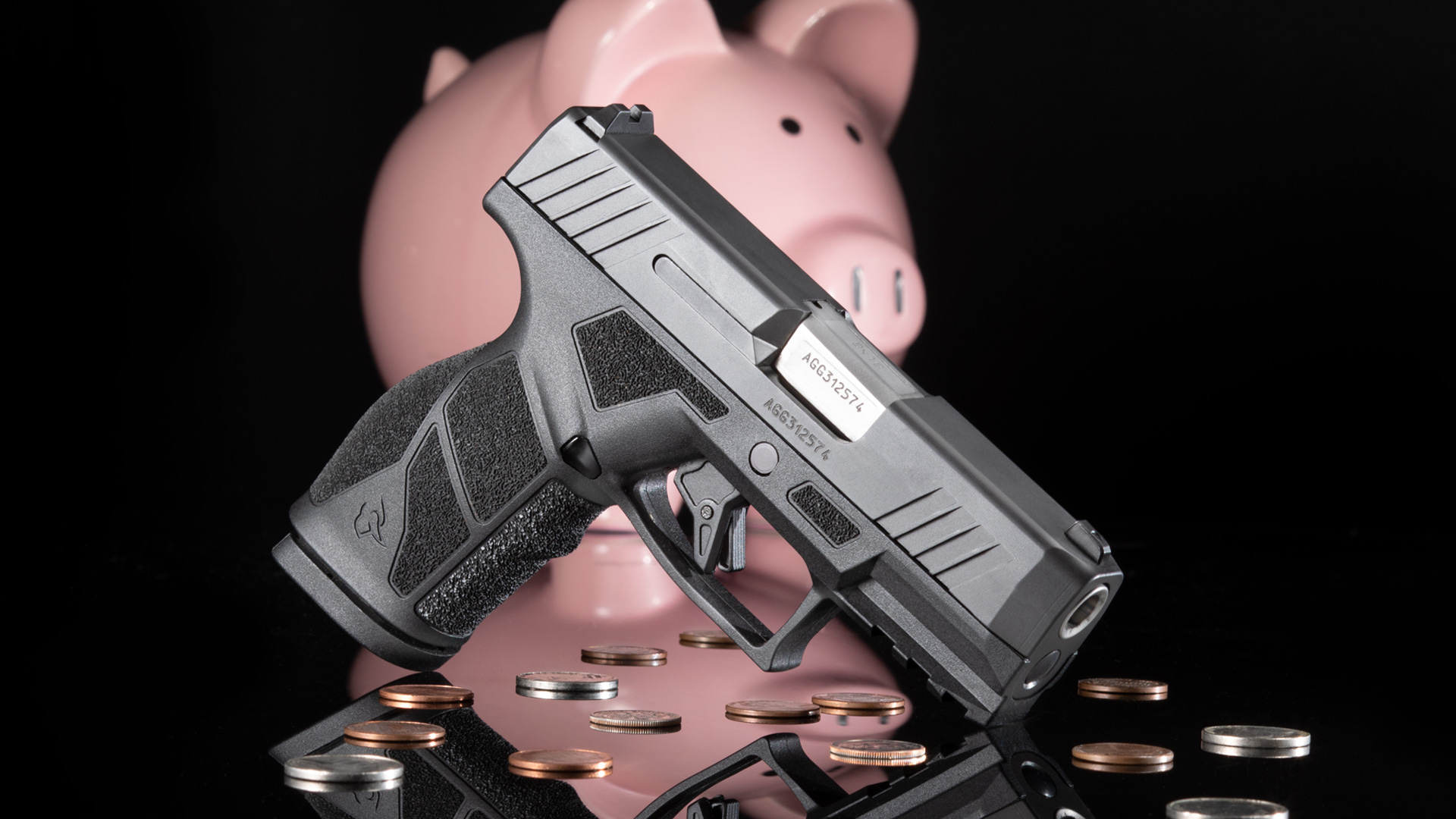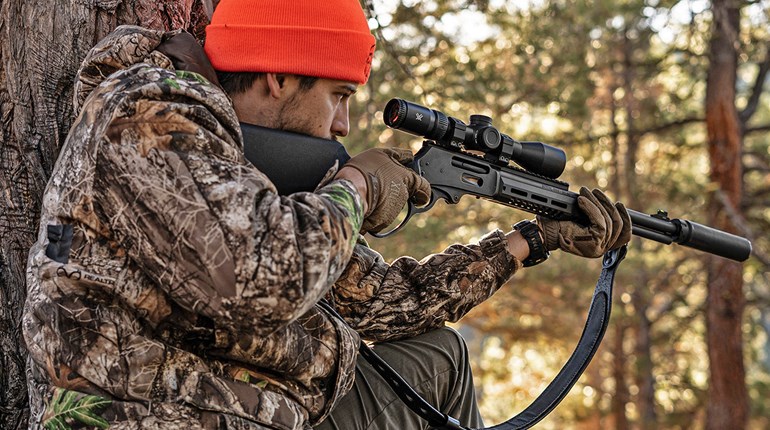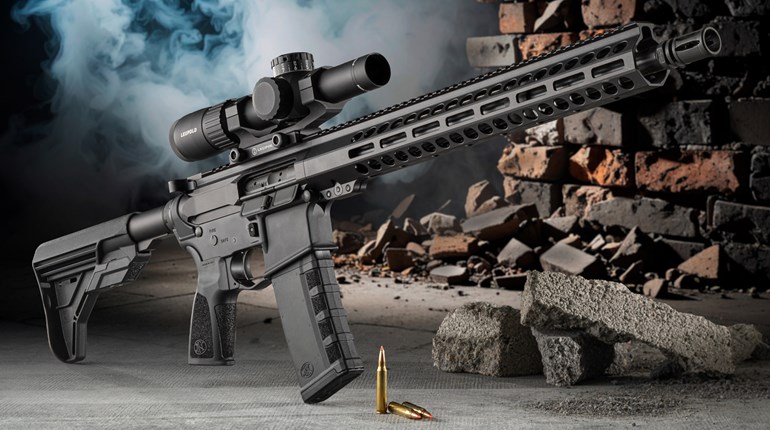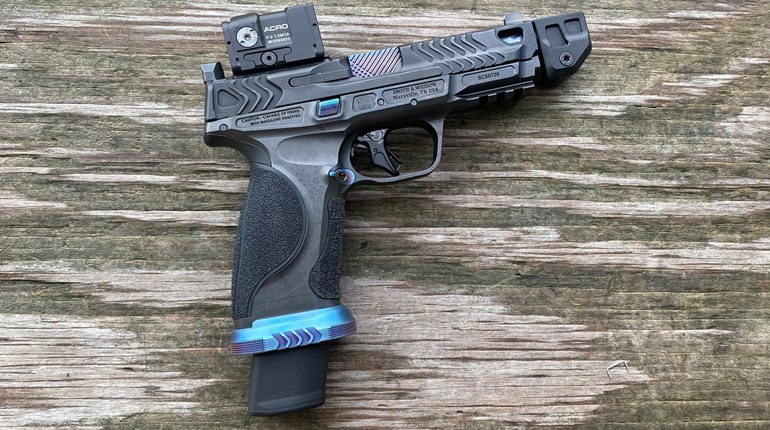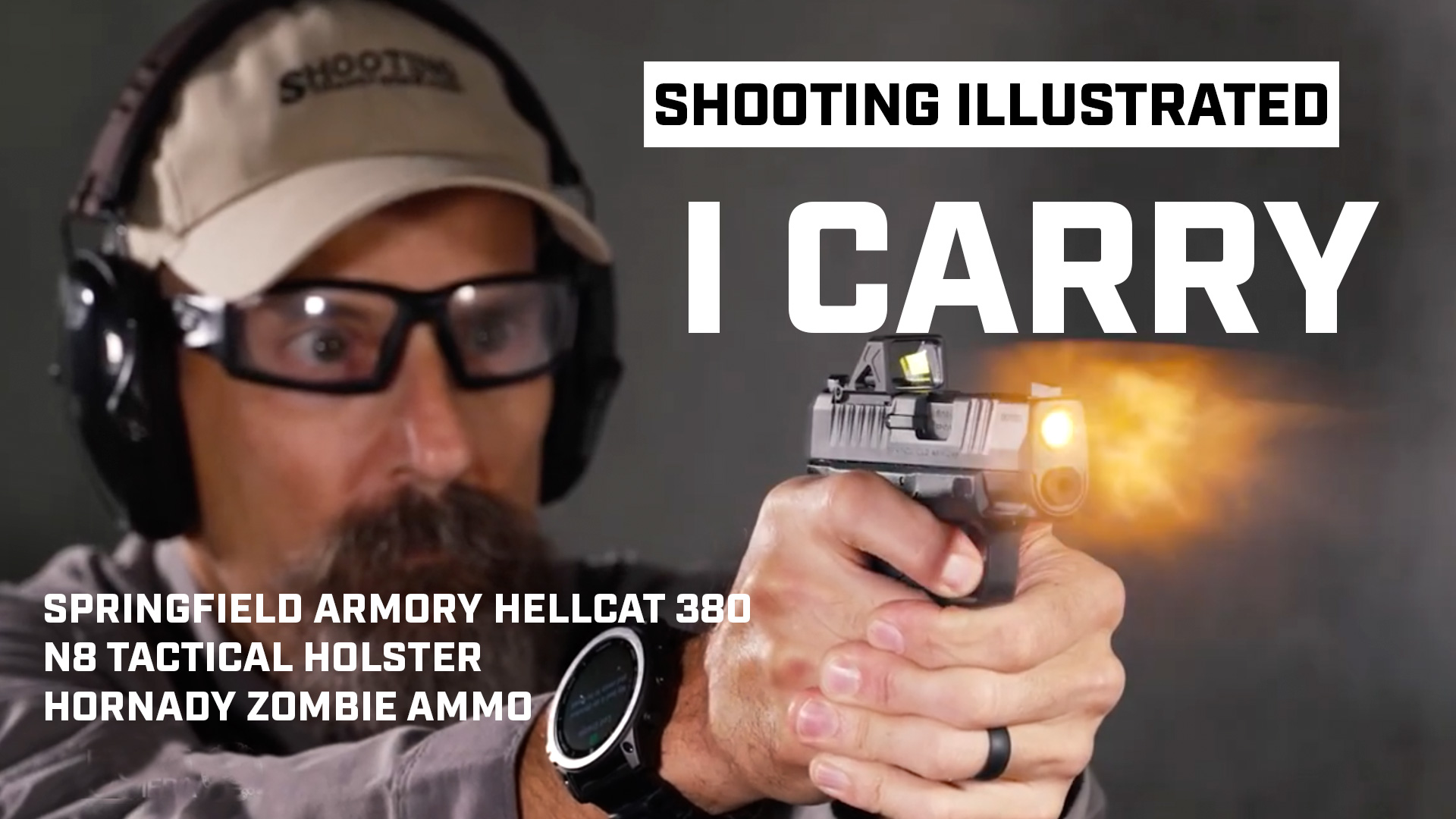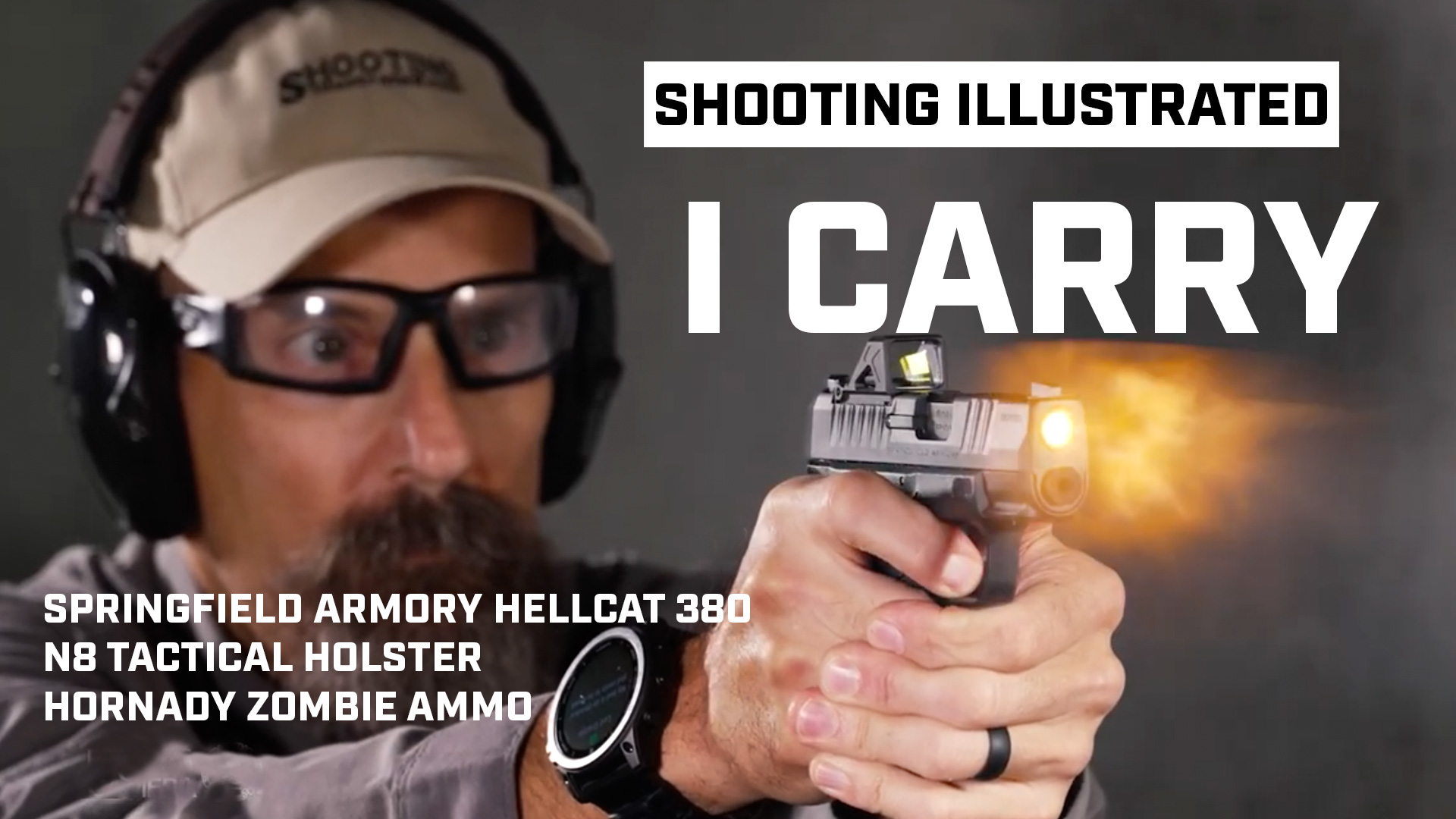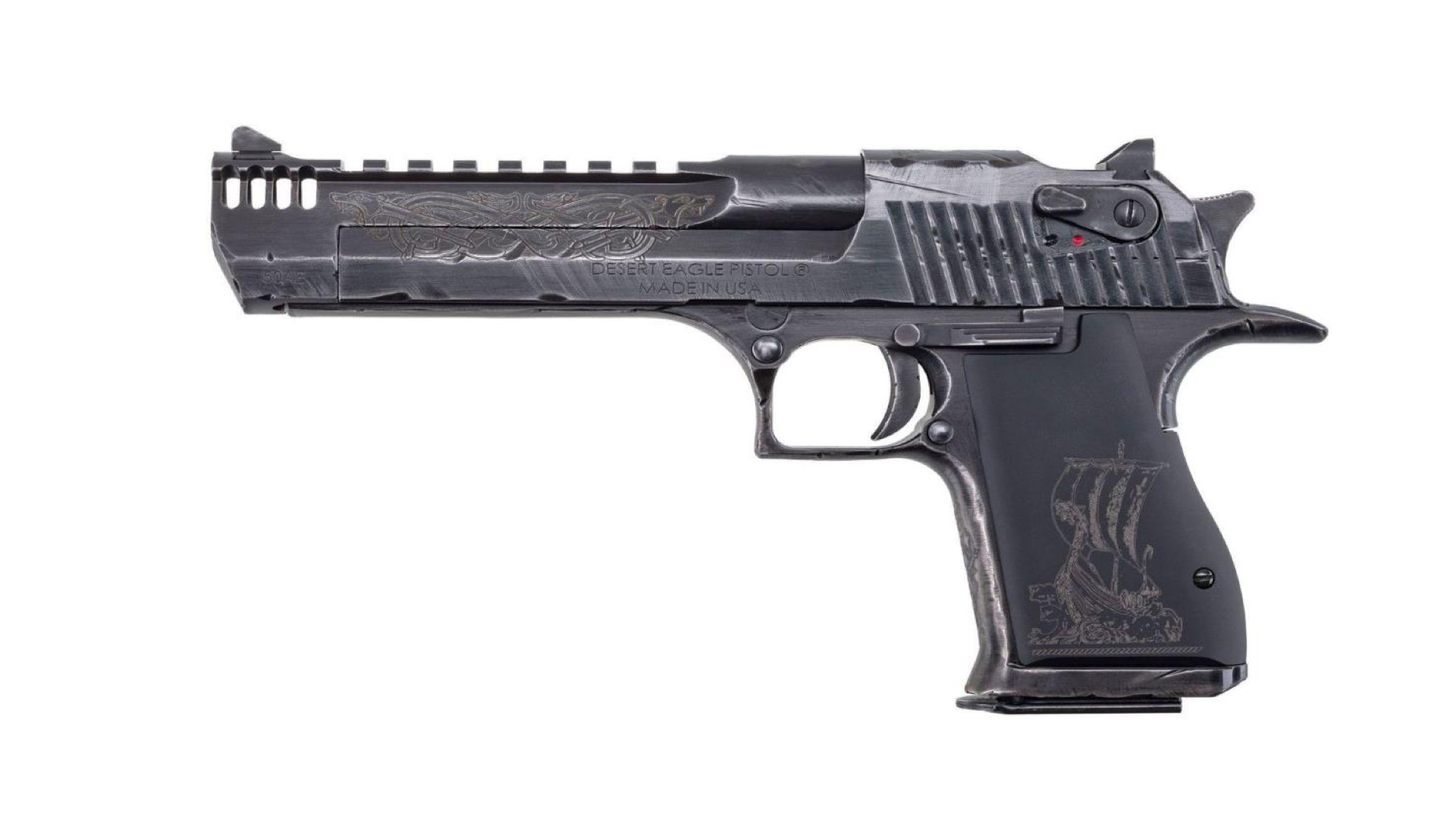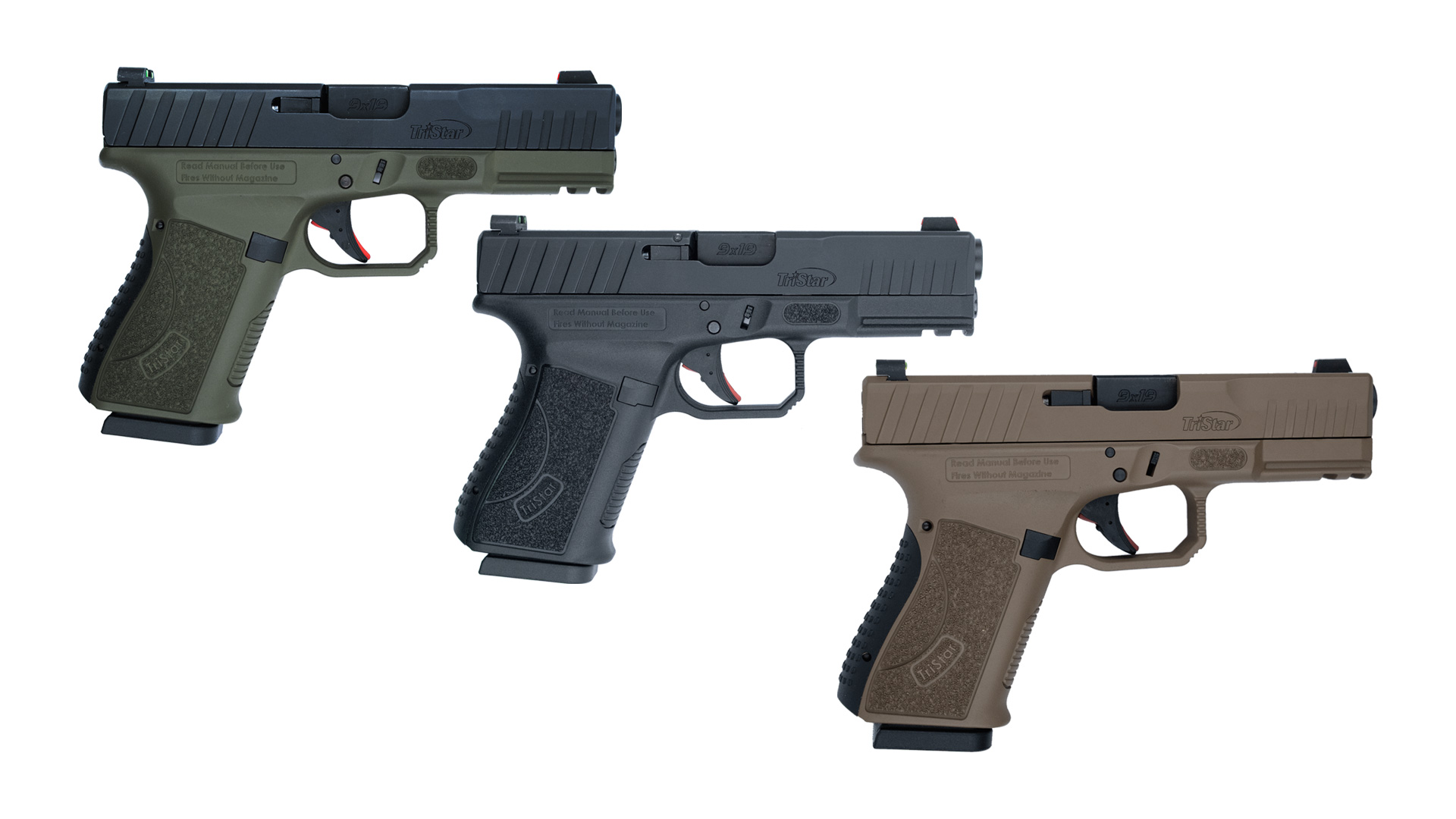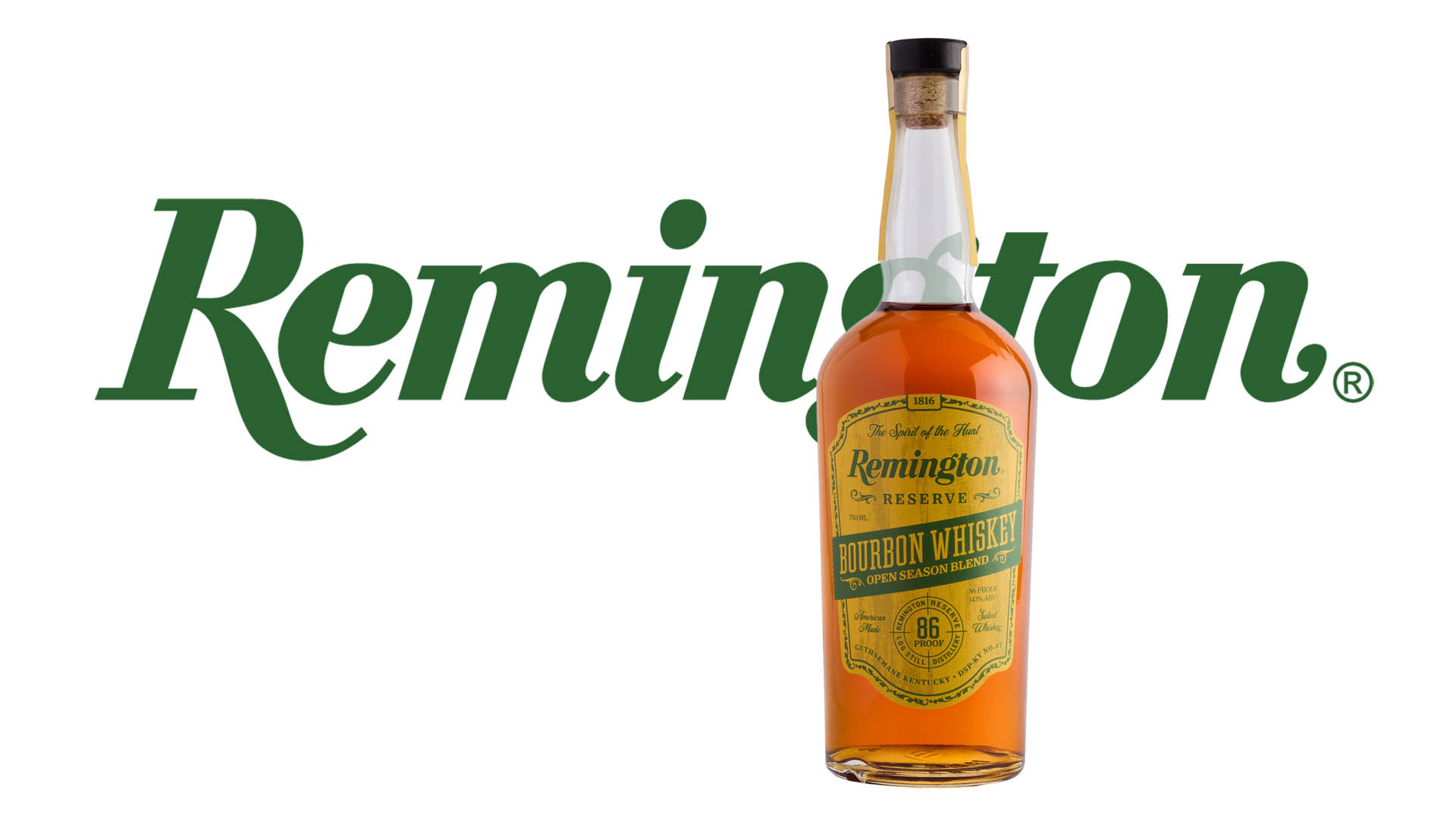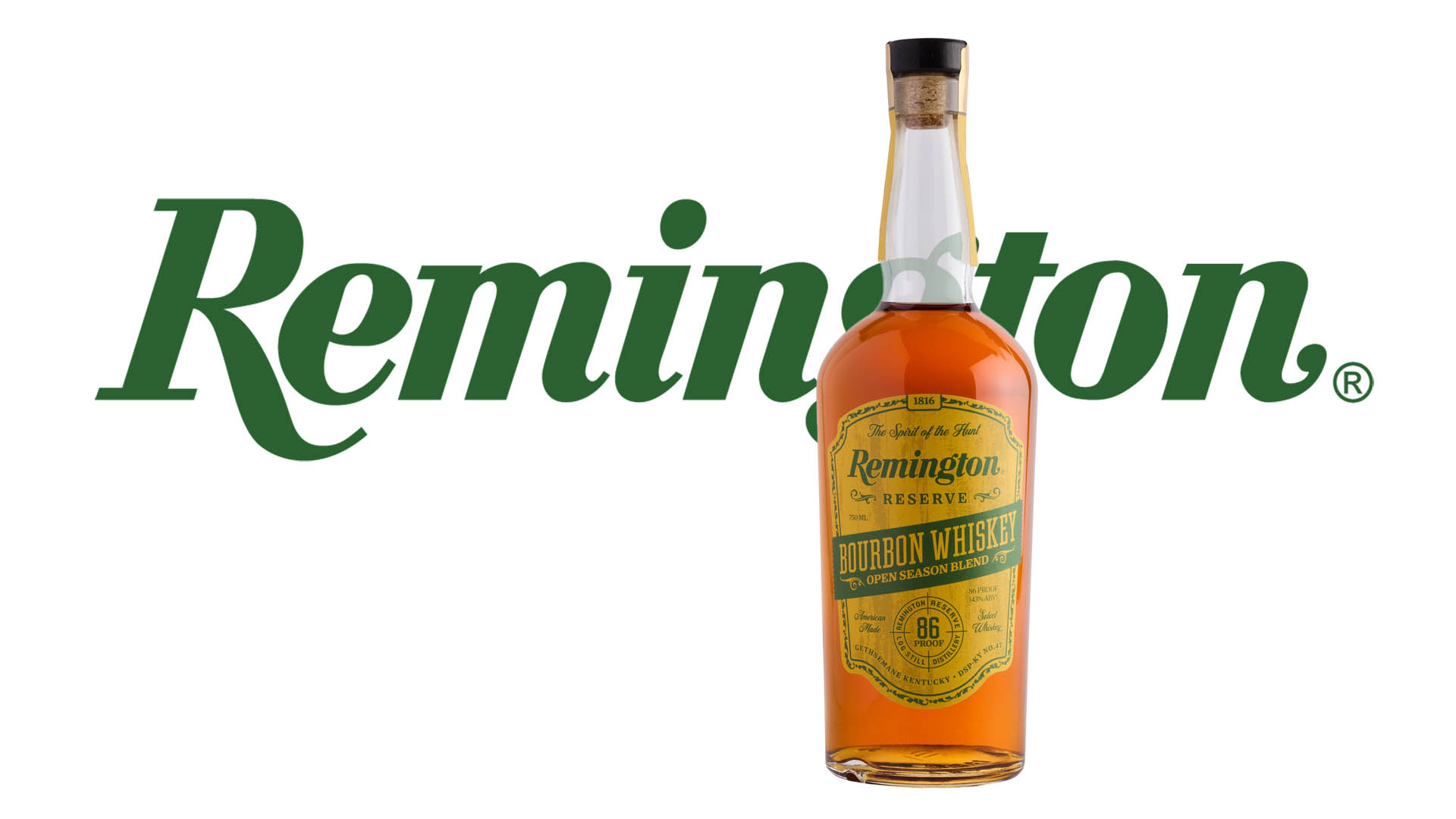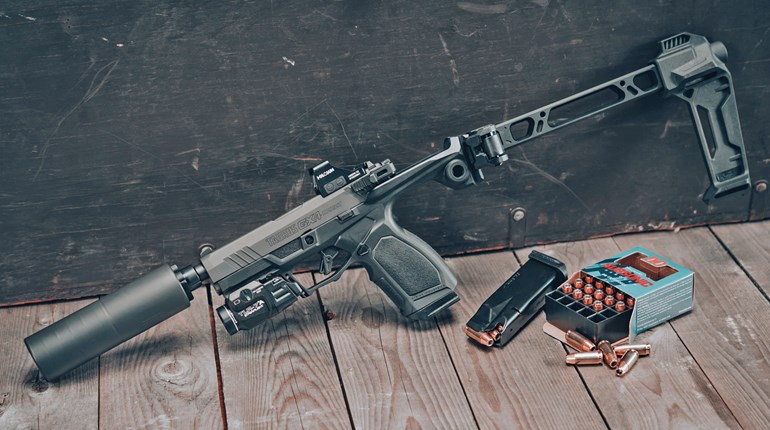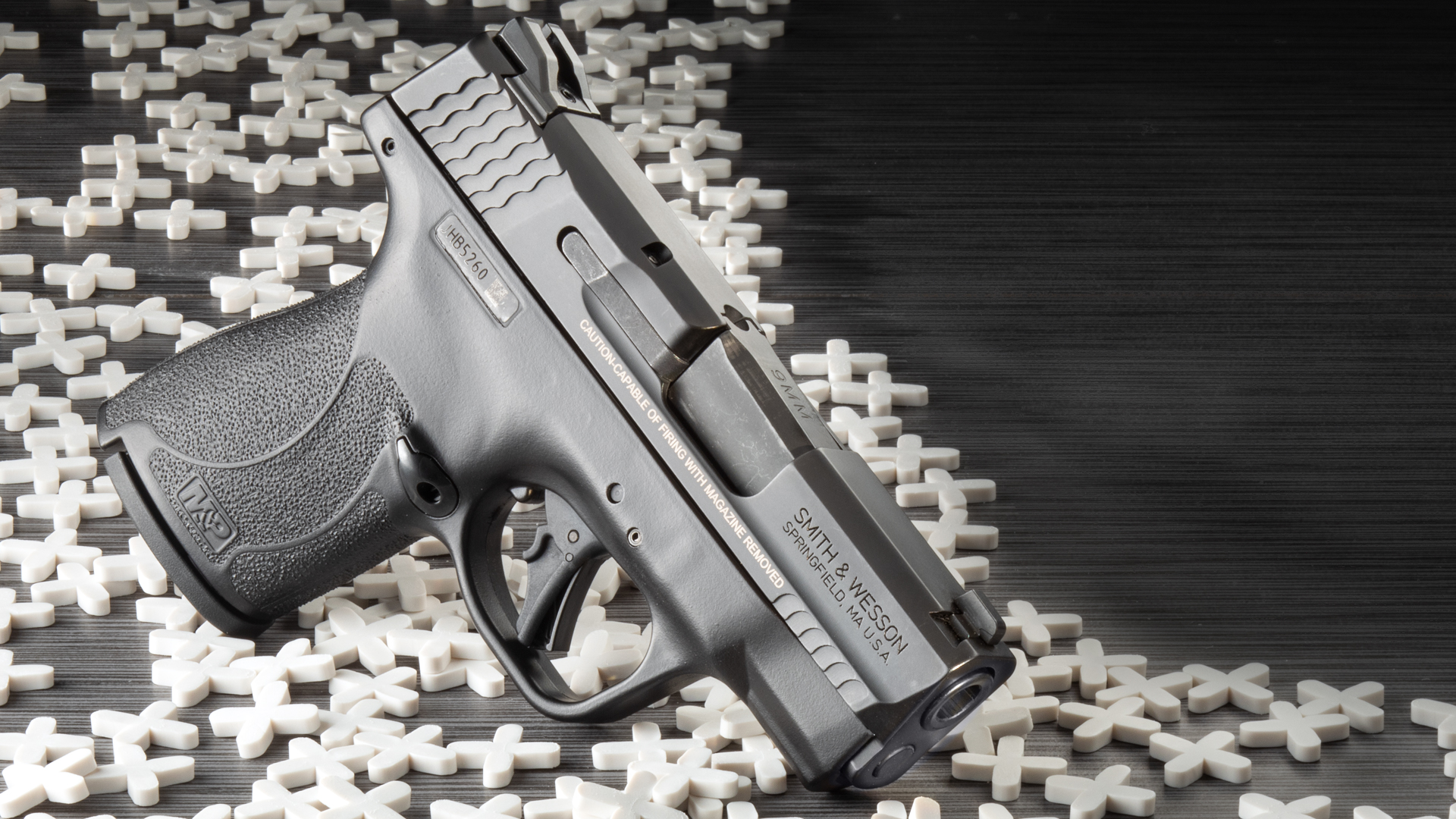
In retrospect, Smith & Wesson had nobody to blame for the situation but themselves. The company didn’t invent the subcompact, lightweight, single-stack nine, of course. Walther and Beretta had preceded the original Shield to market by a few years with the PPS and the Nano, respectively, and Kahr had more or less created the niche back in the 1990s.
But, when Smith & Wesson launched the original M&P Shield subcompact, single-stack 9 mm back in 2012, it was a breakout success in the market segment. It was advertised heavily, priced aggressively and, in a break from typical industry practice, there were units ready to ship and sell when the pistol was announced. Further, popular holster makers had been provided with samples so that when it hit the ground, it hit it running. No waiting three months for a way to carry your new gun. As a result, it sold like bottled water at a habanero-tasting festival.
Glock followed on the Shield’s heels with its own small, single-stack 9 mm, the G43, and it seemed like pretty soon everyone had one or the other in a belt or pocket holster.
SIG Sauer was a little left out in this surge of subcompact, single-stack 9 mm interest. In the midst of the buying frenzy, the company’s P290, which had been released slightly before the Shield, was something of a sales flop. Since it didn’t have a single-stack sales winner, SIG went and made a whole new category. The P365 was a pistol only a tiny bit larger than the trendy single-stack subcompacts, but with a double-column, 10-round magazine.
Suddenly, the single-stack guns were passé and the market turned on a dime: Glock came out with the 10-shot G43X and Springfield Armory one-upped the competition, literally, with the 11-round Hellcat.
And, where did that leave Smith & Wesson and its genre-defining M&P Shield, now on its M2.0 version? Enter the M&P Shield Plus, with much fanfare, earlier this year.

The test gun arrived in the typical, folded black cardboard box with the silver M&P livery emblazoned on it, and when it was open, it revealed … um … a Shield.
Seriously, other than the “Plus” appended to the rollmark on the slide and the different trigger (more on that later), it looks so like its lower-capacity ancestor that if you handed it to someone on the firing line, their first clue that anything was different would be when the slide didn’t lock back after the eighth bang.
The most remarkable thing about the M&P Shield Plus is its unremarkability.
The slide, for instance, is basically identical to its Shield M2.0 forebear. While not technically part of the Shield M2.0 line, and therefore not having the M2.0 rollmark, it has the same vestigial scalloped grasping grooves on the front end of the slide, on the raised ridge along the lower edge. The radiused shape of these matches the “fish scale” pattern of the seven cocking serrations at the rear of the slide.
The slide has a flat top along the sighting plane and, while night sights are available as a factory option, the test gun shipped with plain, non-luminescent, three-dot irons. Since the sight cuts are standard for the M&P Shield, a world of aftermarket, night-sight options already awaits the Shield Plus buyer. The flat sighting plane is broken only by the top of the chamber hood where it locks into the ejection port, and the dimple of the loaded-chamber-indicator witness hole, which will give a glint of brass if the chamber is loaded (or nickel if you’ve got the good stuff in there).
Length, width, height … in every respect the black Meloni … sorry, “Armornite”-finish, stainless steel slide on the Plus appears identical to its lower-capacity brethren. If there are any external dimensional differences, they’ll need a micrometer to be detectable. They certainly aren’t significant enough to matter in a holster, that’s for sure.
Equally important to holster fit, however, is the size and shape of the frame, and that’s where Smith & Wesson’s engineers really worked their voodoo on the M&P Shield Plus.
At first glance, the frame on the Shield Plus has an unusual sort of satin, semi-gloss finish which is not often found on the typical polymer pistol. This is due to a Cerakote-type finish, apparently, and is probably the most controversial feature about the pistol on the internet. (If the biggest gripe anyone has is whether the company decided to paint the frames or not, I’d take that as a good sign.)

Again, from the tip of the dustcover to somewhere just aft of the trigger guard, the dimensions of the Shield Plus frame appear identical to the low-capacity versions. This is important, especially the shape and width of the trigger guard. See, where leather or nylon holsters can be a little forgiving in fit and rely on either friction or a retention strap to secure the handgun in the holster, newer Kydex rigs use a mechanical lock around the trigger guard.
Basically, the holster is molded tightly around the contours of the trigger guard, allowing it to click in and out of retention. If a company revamps the shape or width of the trigger guard, most of the existing holsters will no longer function. Since the Shield Plus is dimensionally unchanged forward of the grip, it functioned fine in the Hitchhiker holster provided by Dark Star Gear for testing.
The other thing facilitated by the unchanged trigger guard and dustcover dimensions is the use of existing lights and lasers. Since the Shield line is too small to sport any useful rail, companies like Crimson Trace and Streamlight developed their low-light accessories to nestle under the dustcover by clamping on to the front face of the trigger guard. If you want to move up in capacity from a regular Shield and were worried about not being able to use accessories you already own, don’t worry because they’ll port right over to the new gun.

All the capacity magic in the Shield Plus happens aft of the trigger guard and below the frame rails. It’s only readily noticeable if you hold an original Shield and the Plus side-by-side and look at the frames from the rear. The grip on the Plus is ever-so-slightly wider and, well, for most folks that’s probably not a bad thing at all.
The size difference, while only a small fraction of an inch when measured across the widest part of the grip, adds up around the entire circumference to make for a gun that is more comfortable and usable for anyone who wears gloves in Medium or Large. The original Shield was super skinny, but like all single stacks, it could get to feeling like you were holding on to a hard-recoiling Popsicle stick when trying to run the gun fast with anything other than the softest loads. The slightly larger circumference pays big dividends in controllability.
Texture-wise, the panels look like the ones on the Shield M2.0, covering 360 degrees of the grip; the Plus lacks the smooth center panels of the original Shield. To the hand, though, the texture splits the difference between the not-grippy-enough original gun and the almost-skateboard-tape abrasiveness of the M2.0. Perhaps it’s the coating taking the harshest bit of edge off the M2.0 texture, but it feels good.
Controls-wise, the Plus inherits the single-side slide release of the original gun. Out of the box, it was pretty beastly to actuate, and it was generally easier to run the slide overhand from slidelock rather than thumb-wrestle the semi-recessed, curved sheetmetal tab. It loosened up after a few range trips, though. If you’re a southpaw, you’ll be running it by hand no matter what, because an ambidextrous slide stop has been sacrificed on the altar of thinness.
 The magazine release, on the other hand, is reversible. It’s a sort of teardrop shape, textured for purchase and easily reachable, yet unlikely to get bumped accidentally while firing. A manual thumb safety is an available option, if that’s your thing, but the test gun was not so equipped.
The magazine release, on the other hand, is reversible. It’s a sort of teardrop shape, textured for purchase and easily reachable, yet unlikely to get bumped accidentally while firing. A manual thumb safety is an available option, if that’s your thing, but the test gun was not so equipped.
This brings us to the biggest difference in the controls on the Plus: The new trigger.
Possibly the least popular control feature on Smith & Wesson’s polymer-frame semi-automatics—before even the M&P was created—is the hinged, two-piece trigger. It serves the same function as the more common tabbed type popularized by Glock pistols, which is to protect the trigger from essentially pulling itself via inertia if the gun is dropped from a height or struck by a vigorous enough blow from the rear.
While it’s not a true flat-faced trigger, it’s pretty close. The sear breaks when the shoe is perpendicular to the frame, promoting accuracy, and the unit on the sample gun broke cleanly and repeatedly at 5.25 pounds. That’s .75-pound lighter than the PC Shield M&P40 I tested in 2016, and it’s by far the best feeling factory Shield trigger I’ve tried.
The slightly beefier grip and improved trigger paid dividends at the range, where 8- and 10-inch plates could be engaged at 15 to 20 yards without much effort. While the flush-fitting 10-round magazine is more concealable—and I could still (just barely) squeeze most of my little finger onto the grip, giving a sort of “two-and-a-half finger hold”—I appreciated the spare magazine for range work. Reason being, the second magazine in the box, at least in states without capacity restrictions, is a 13-round ’stendo with an adaptor collar on it.
Textured to match the frame and contoured to blend with the grip, the collar on the 13-rounder allowed my pinkie finger to get involved in controlling recoil rather than just kind of being along for the ride. This resulted in a huge difference when it came to shootability. Were I to buy a Shield Plus, I’d have the one flush-fit magazine for carry and all of my spares would be 13-round magazines.
The test gun fired 650 rounds with only one malfunction, and that was the very first round I tried to load, which ran aground on the feed ramp when I fumbled the super-stiff slide release right out of the box. This being the middle of the worst ammunition drought in recent memory, it was “beggars can’t be choosers” time when it came to ammunition selection and, even with some inconsistent Sarsilmaz 124-grain FMJ, the Shield Plus ran without a bobble.
When it came time to clean the gun, which only happened once while it was in my hands, it took down and reassembled as easily as any other M&P. Clear the pistol, lock the slide to the rear, use a screwdriver tip or similar small object through the ejection port to press the sear-deactivation lever down, rotate the disassembly lever down and remove the slide from the front of the frame. No trigger pulling required, which is nice. Reassemble in reverse.
So, what’s the verdict? Normally, shooting a new variant of an existing pistol line is a lot like going to the zoo—either you’re happy to see the giraffes again or you’re not. In the case of the Shield Plus, though, there are a lot of pleasant surprises, from the bump in capacity to an out-of-the-box trigger that’s like the kind you used to need to have a gunsmith install. In this case, it was like going to the zoo and finding they’ve added a unicorn exhibit.





